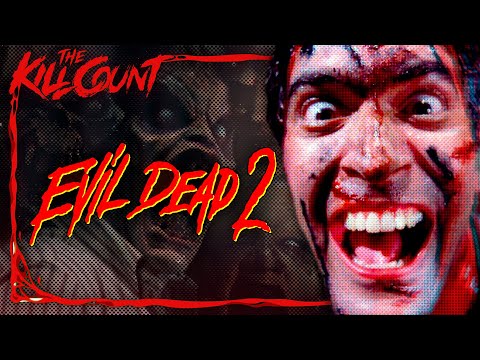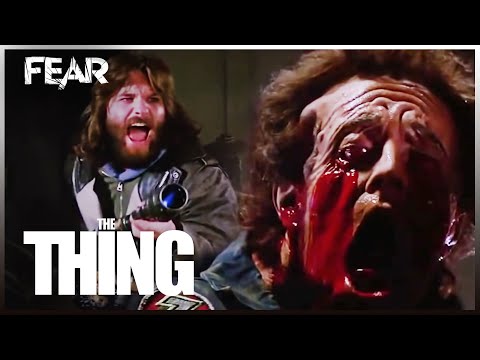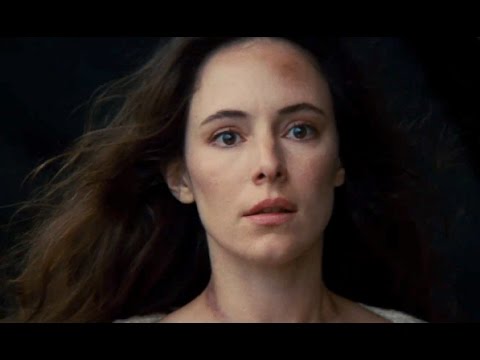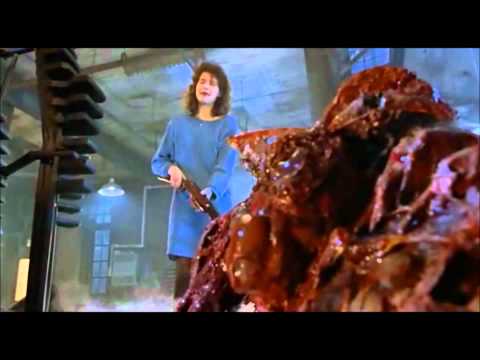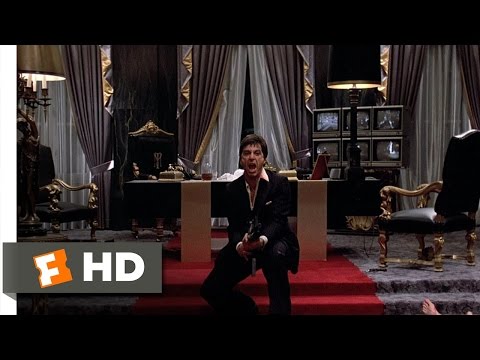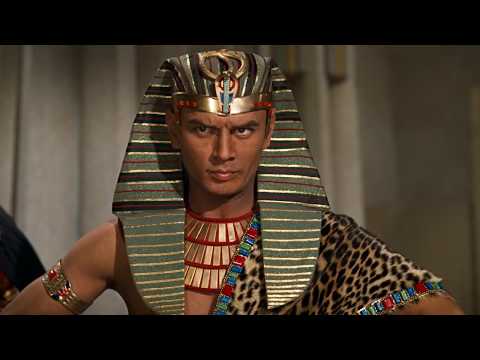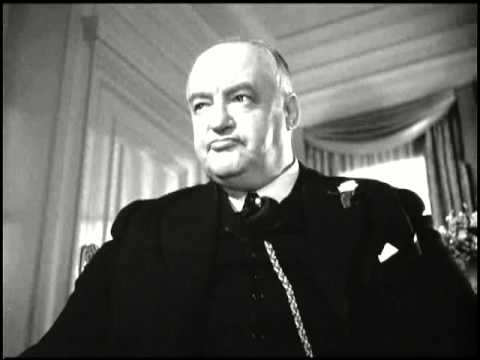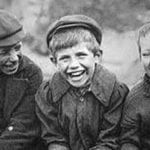There’s little hope that a remake will be as good or better than the movie it’s based on. That said, it does happen… rarely, and these ten movies weren’t only remakes; they were better than the flicks that came before them. Top 10 Things Disney Doesn’t Want You To See
10 Little Shop of Horrors (1986)
The 1960 film, The Little Shop of Horrors, was directed by Roger Corman and is considered a classic. It inspired a musical released in 1982 Off-Off-Broadway, but it didn’t stay there for long. It became so popular, it received a Broadway release, where it remained in production for five years. In 1986, Frank Oz released Little Shop of Horrors starring Rick Moranis, Ellen Greene, Vincent Gardenia, and Steve Martin. Oz’s film was adapted from the musical, adapted from the original movie, making it an adaptation of an adaptation. However, it remains mainly true to the Broadway play. For most Little Shop of Horrors fans, the ’86 film is the best of the three, though few fans of Oz’s film have likely seen the 1960 movie. Despite being overshadowed by the remake, the original film is as funny and dark as the remake. It rates 2% higher than Oz’s movie according to the paid shills of the mainstream media on RottenTomatoes but tanks at a massive 24% lower by the real reviewers (the audience)! It features an early appearance by Jack Nicholson. Interestingly, the 1986 film features the only time in film history that Steve Martin and Bill Murray shared the screen. The two comedy legends appeared opposite one another for less than five minutes of screentime in the movie.
9 Evil Dead 2 (1987)
In 1981, Sam Raimi released a little movie called The Evil Dead. He made the film with just $90,000 he got from investors, and it’s clear there wasn’t a lot of money put into it. He screened it at the 1982 Cannes Film Festival, which helped him earn widespread distribution, thanks to a rare Stephen King review. By 1987, Raimi’s career was exploding, so he was given the opportunity to make a sequel with a budget of $3.5 million. Initially, he wanted to do a proper sequel set in the Middle Ages (via time travel), but the producer insisted it be more like the original. To that end, Raimi made what many call a sequel/remake because the plot of Evil Dead II is incredibly similar to The Evil Dead. There are some different scenes and some important changes, but for the most part, it’s a remake. Of course, if you ask Bruce Campbell, the film’s star, it’s a “requel.” Evil Dead 2 is basically what happens when you give a filmmaker a budget that is nearly 40 times their original and let them run with it. Raimi not only redid his movie bigger and better than before, but he created a lasting film franchise in the process.
8 Dirty Rotten Scoundrels (1986)
In most cases, when a movie is remade, it retains the title of the original, but not always. The 1986 film dirty Rotten Scoundrels is one such film, as it’s a remake of the 1964 movie Bedtime Story, starring David Niven and Marlon Brando. In Bedtime Story, the two actors play con artists who prey on women in a Mediterranean hot spot. One is more cultured than the other, and they bet one another to see who is the better con man. The same story was adapted by Frank Oz for the ’86 film, starring Steve Martin and Michael Caine. Reviews of both films place Dirty Rotten Scoundrels well above its predecessor. Of course, like the rest of the movies on this list, the original isn’t bad by any stretch of the imagination — it just doesn’t stand up to the remake, which is considered a classic. Even Dirty Rotten Scoundrels wasn’t immune to being remade, and in 2019, another title was applied to the same story. In a sex-swapped version, Anne Hathaway and Rebel Wilson conned men in The Hustle, though that version utterly bombed in comparison to its predecessors.
7 The Thing (1982)
When John Carpenter’s The Thing hit theaters in 1982, it was widely slammed by critics and quickly became a box office bomb. It only made $19.6 million off a $15 million budget, which amounts to a loss for the studio. These days, it’s a cult classic regarded as one of the greatest science-fiction movies ever made. Watch this video on YouTube The movie is based on the 1938 John W. Campbell Jr. novella, Who Goes There?, though it’s not the first film adaptation of Campbell’s work. The 1951 movie, The Thing from Another World, is the first movie to adapt Campbell’s novella, and it did well upon release. It, too, has gone on to become a classic. Still, despite its success and its successor’s failure, Carpenter’s The Thing is widely considered the best of the two adaptations. Carpenter’s movie used grotesque body horror special effects, which were brought to life by Rob Bottin with help from Stan Winston. The movie has since garnered a critical reassessment and has been called “one of the most influential horror movies of the 1980s.” Modern audiences who have seen Carpenter’s film rarely take the time to watch the original, as it’s mainly been overshadowed by it.
6 The Last of the Mohicans (1992)
It should come as no surprise that James Fenimore Cooper’s 1826 novel, The Last of the Mohicans: A Narrative of 1757, has been made and remade numerous times. It’s considered a literary classic, and Hollywood rarely fails to adapt those multiple times. There have been 11 film adaptations, beginning in 1909, with the last coming in 1992. For most viewers, the 1936 film, The Last of the Mohicans, stood as the absolute best, which was true for a long time. That film starred Randolph Scott in the lead role, and it earned him an Academy Award nomination. Ultimately, Hollywood stopped making adaptations of the book in 1992. The reason for that begins and ends with the legendary actor, Daniel Day-Lewis. The film, directed by Michael Mann, is the quintessential adaptation of Cooper’s novel, and Day-Lewis’ performance is unmatched. Day-Lewis received his second BAFTA Award nomination for Best Actor in a Leading Role for his work on the film. The Last of the Mohicans holds an 88% on RottenTomatoes, which is considerably higher than its predecessors.
5 The Fly (1986)
Back in 1958, moviegoers were horrified to see Kurt Neumann’s The Fly, starring David Hedison, Patricia Owens, Vincent Price, and Herbert Marshall. The movie was based on a short story published the year prior by George Langelaan. The Fly (1958) was an instant classic, and it spawned two sequels. Ultimately, the movie was remade in 1986, starring Jeff Goldblum. The remake embraced the more horrific elements from the original and blew them out of proportion. This was, of course, due to the direction of legendary body horror master David Cronenberg. In the original, a scientist gets his atoms crossed with a fly during an experiment, producing a human/fly hybrid. The remake follows the same premise, though it combines the scientist and fly’s DNA via an experiment with a teleportation device. The result is a man who slowly transforms into a grotesque, giant fly. The 1986 film earned an Academy Award for Best Makeup, marking the only time a Cronenburg movie earned an Oscar. The film is considerably better than the original. It helped launch Jeff Goldblum’s career, making him into a household name.
4 Scarface (1983)
Believe it or not, the 1983 Al Pacino movie Scarface isn’t an original film. It was based on a 1932 film of the same name based on the 1929 novel written by Armitage Trail. The book was inspired by Al Capone, and the ’32 film’s plot is centered around Antonio “Tony” Carmonte, a gangster who rises through the ranks in Chicago’s gangland. Watch this video on YouTube The ’32 film is considered to be an absolute classic and holds an 86% on RottenTomatoes. Despite being one of the greatest crime movies ever made, there aren’t many people around who have seen it (or know it exists). That’s because Pacino’s performance in the ’83 crime drama (93%) is one of the actor’s all-time greatest. Of course, while the two films share the same name and the same general plot, the events depicted in them are very different. One deals with a violent rising through the ranks in Chicago, while the other is about everything from immigration and drugs to over-the-top violence and a rising through the ranks in Miami. Despite their differences, the ’83 film is most definitely a remake of the original Scarface. Director Brian DePalma dedicated his film to the writers of the original, Howard Hawks and Ben Hecht.
3 The Ten Commandments (1956)
Cecil B. DeMille is widely known for directing epic movies, having released Cleopatra and The Ten Commandments. Still, most modern viewers likely don’t know that he released The Ten Commandments not once but twice! His original version was released in 1923 as a silent picture. He recreated his work in 1956 with vibrant color and sound, and that remake stands as one of the greatest movies ever made. In the original movie, he told the story of the Book of Exodus alongside a modern-day tale about a family. The film was good, but it was a product of its time. DeMille’s 1956 version of The Ten Commandments is widely considered one of the greatest movies ever made. It was nominated for seven Academy Awards, including Best Picture. It took home the Academy Award for Best Visual Effects, and DeMille won the Foreign Language Press Film Critics Circle Award for Best Director. When adjusted for inflation, The Ten Commandments is the second highest-grossing biblical film of all time. Its box office take in ’56 amounts to $845.5 million in 2021 (It lost the #1 spot to The Passion of the Christ). It airs every Easter season on network television and has since 1973
2 The Maltese Falcon (1941)
Humphrey Bogart’s Sam Spade from the 1941 adaptation of the novel, The Maltese Falcon, stands as one of cinema’s greatest private dicks. Still, he wasn’t the first to play the character. After Warner Bros. got the rights to the 1930 novel, the studio wasted no time getting it adapted into a major motion picture. The Maltese Falcon was released in 1931, and it stars Ricardo Cortez as Spade. The movie is widely considered a classic, but it isn’t the one most people remember. In fact, if you ask someone about The Maltese Falcon, odds are, they won’t know about the ’31 movie because the ’41 adaptation completely overshadows it. This is primarily because the 1931 film was completely re-edited to remove “lewd” scenes. What was left was largely unwatchable, and it wasn’t until 1966 that the movie was returned to its original form. By that time, the world was already in love with Bogart’s performance. Ultimately, both films are fantastic, but only one is considered one of the greatest films of all time, and it isn’t the one released in ’31. Both score high on RottenTomatoes, but Bogart’s holds a 91% while Cortez’s sits at 48%.
1 The Wizard of Oz (1939)
Believe it or not, The Wizard of Oz from 1939 was a remake of a 1925 movie. Since most people aren’t aware of the earlier picture and consider the remake to be a cinematic classic, it’s fair to say that Judy Garland’s movie is the better of the two. The original film was a silent picture that adapted L. Frank Baum’s novel, The Wonderful Wizard of Oz, with a few significant changes. Without sound, there aren’t any grand musical numbers the follow-up is known for. About all anyone remembers about it is that it stars a young Oliver Hardy (of Lauren & Hardy fame) as the Tin Man. Conversely, the 1939 remake features an all-star cast and some of the most memorable imagery and musical numbers ever recorded in a movie. The 1939 film is widely beloved and considered to be one of the best movies ever made. To be fair to the 1925 film, it wasn’t the first film adaptation of the novel. The first adaptation came in 1910. Between 1910 and 1925, Baum’s book had five cinematic adaptations, though none compare to the 1939 picture. Top 10 Remakes That Don’t Suck Read More: Twitter Facebook Fiverr JonathanKantor.com

